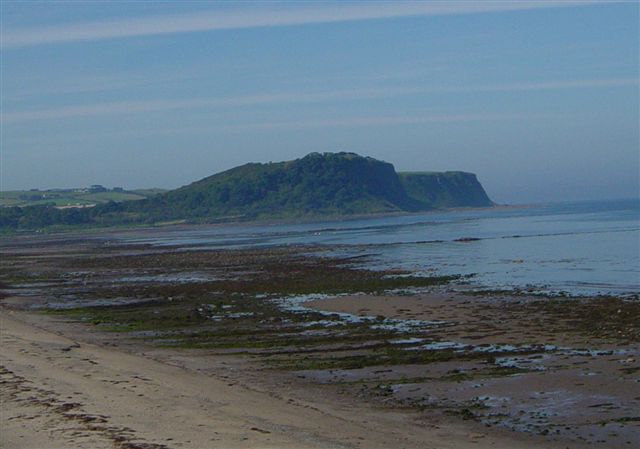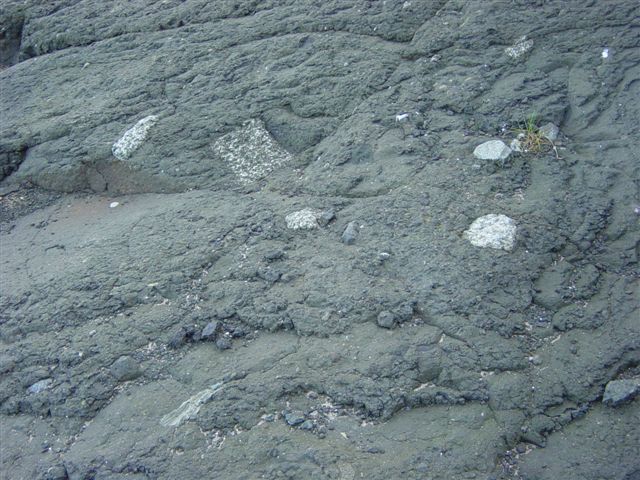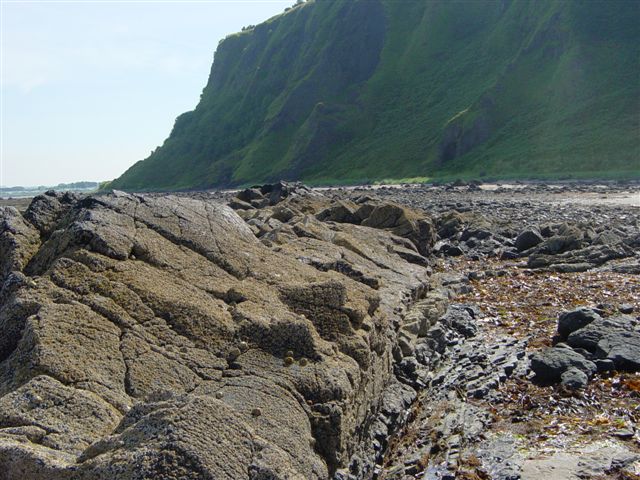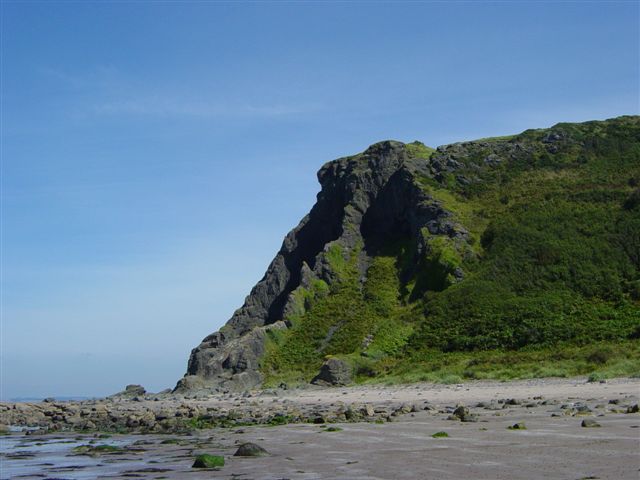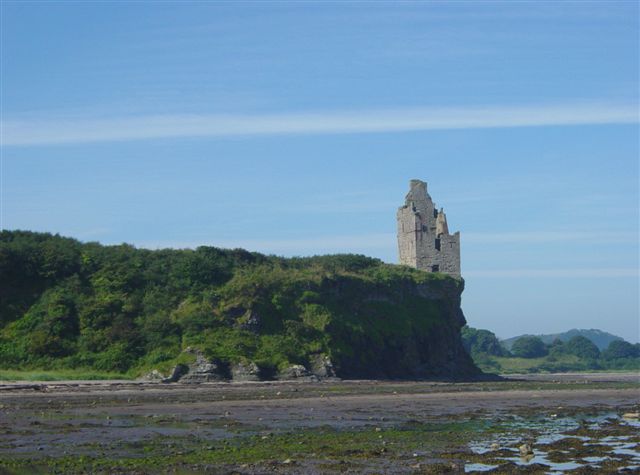22nd August 2007 |
||||||||||||||||||
HEADS OF AYR Access: Shore walk from Doonfoot. Tour: self Weather: A very fine, and long overdue, summer's day. Summary: A Lower Carboniferous vent at Heads of Ayr intrudes slightly older Carboniferous sediments. Most of the material associated with the vent represents pyroclastic flow deposits, relatively soft bedded tuffs and agglomerates, which have been deeply eroded, so much so that much of the wavecut platform in front has been carved out of the same materials. The tuffs contain frequent fragments stripped from local rocks by the volcanic activity, including peridotites of deep-seated origin and the Carboniferous (cementstone) sediments. A prominent northwest-southeast trending Tertiary dyke cuts sediments in the wavecut platform and tuffs of the eastern vent. |
||||||||||||||||||
|
||||||||||||||||||
